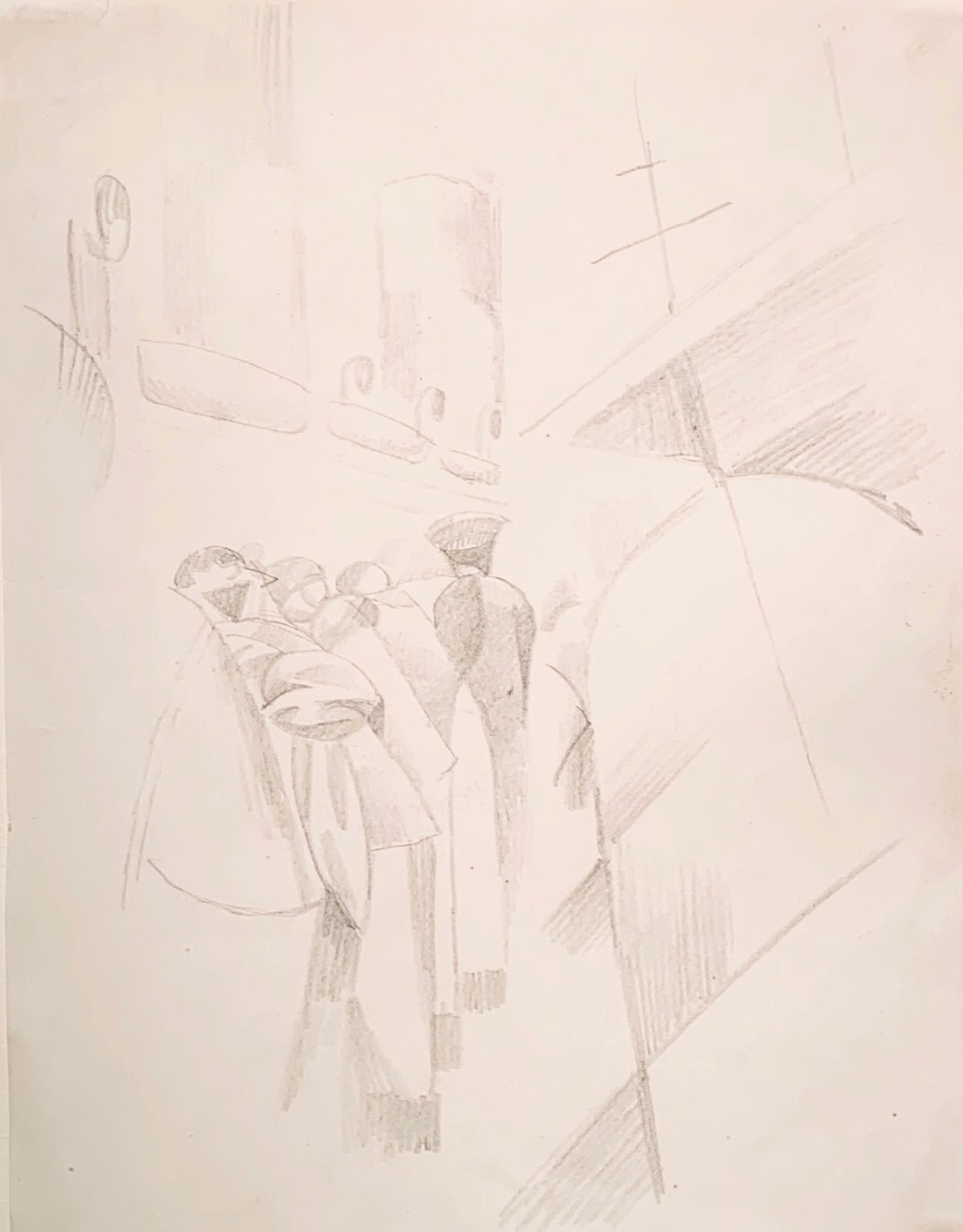Biography
August Robert Ludwig Macke was one of the most famous German Expressionist painters. He participated in the two exhibitions of the Blauer Reiter.
In about ten years, Macke created a body of work that initially under the influence of the diverse art movements of the time underwent rapid stylistic changes. The personal style, which he finally found his way to and which is today perceived as typical for Macke, is characterized by his preoccupation with the effect of light and the use of pure, bright, harmonious colors. The paintings seem cheerful and light, everything tragic is foreign to them. “His paintings satisfy the longing for positive images of an intact world, the harmony of man with the things that surround him”.
August Macke was open to the diverse artistic currents of his time and experimented with new painting styles in his paintings. Due to the changing influences, his work shows a rapid stylistic change despite the short creative period of about ten years.
In 1907 he became acquainted with French Impressionism, first through black-and-white illustrations and publications by the art historian Julius Meier-Graefe, and then in the original on his first trip to Paris. This caused a boost in his artistic development. He now turned his attention away from the motif and towards the pictorial effect itself, whereby he was particularly interested in light and colour, whose effects are in harmony. Temporarily, for example in the painting Am Rhein by Hersel, he used the typical Impressionist painting technique of small, blurred brushstrokes. Above all, however, the influence of Impressionism influenced his choice of motif. Macke now preferred everyday motifs without symbolic content: his own domestic surroundings, gardens, landscapes, walkers, animals in the zoo.
In the course of the Tegernsee Year, Macke’s painting style changed again, this time under the influence of the French Fauves, but also of the German Expressionists, including members of the Neue Künstlervereinigung München, such as Franz Marc and Gabriele Münter. His paintings now show a bright colorfulness and simplified forms, often framed by a dark line. The depth of the room recedes in favour of a two-dimensional effect, and an interest in the ornamental is often discernible. The numerous still lifes that Macke painted from now until about 1912 show the influence of Henri Matisse, whom he admired.
During his contact with the Blauer Reiter, Macke occasionally experimented with an abstract style of painting based on the model of Wassily Kandinsky and Franz Marc. Among other things, he created the painting Der Sturm (The Tempest), which was reproduced in the Blue Rider’s Almanac. Macke abandoned this painting style, which was untypical and not in keeping with his own style, in 1912. The painting Spaziergänger am See I (1912) marks a decisive turning point in Macke’s work. Sharp-edged, acute-angled forms are jerked against each other here in a jerky dynamic, the unity of the picture surface is dissolved. Macke was thus reacting to the impressions of early Cubism with its pioneers Pablo Picasso and Georges Braque.
Initially, he even adopted the dark, subdued colourfulness of this painting style, which was quite atypical for him. On the other hand, the prismatic, overlapping and overlapping elements, which have also appeared in Macke’s paintings and drawings since 1912, can be traced back to Futurist influences. One of the aims of Futurism was to express speed through the simultaneous representation of successive processes.
One example of this is the large, bright display window from 1912, which reflects the tangle of the street, including a horse running to the left, a cab driver moving to the right, and a revolver (possibly a poster) in the upper right-hand corner.28 Macke was also greatly impressed by the rhythmically structured pictures of Robert Delaunay, who was personally acquainted with him, moving through light and color. From now on his influence can be seen in many of Macke’s paintings, for example in the fashion business (1913).
August Macke did not fully subscribe to any of these art movements, but took the elements that suited him and developed his personal, unmistakable style from them. The objects are now simplified (often as geometric forms) and subordinated to the colour composition, but the representational aspect is not completely abandoned. The colours shine, there are no more hard contours. This is exemplified by the Garden at Lake Thun from 1913, one of Macke’s few pure landscape paintings.
The painter had now found his most important subjects: Woman(s) in front of a shop window, strolling in a park, animals in a zoo. In many of the paintings there is motionlessness; the people are turned away from the viewer, often holding their heads lowered and their eyes closed as in meditation. Often there is something dreamy about the paintings. They show Macke’s vision of a paradisiacal world.
